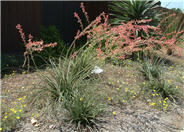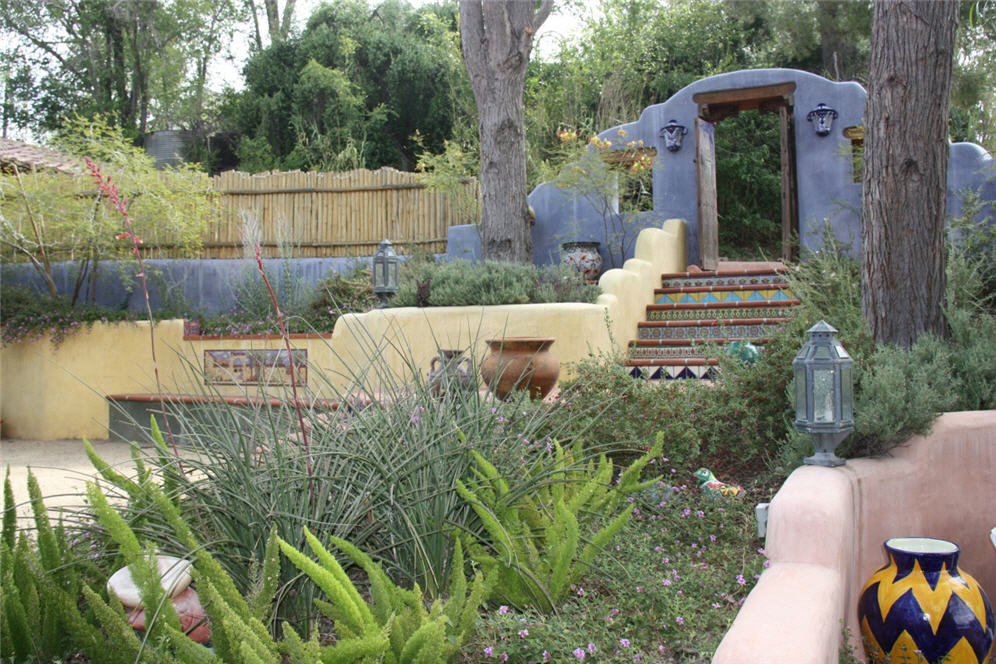
Common name:Red Yucca
Botanical name:Hesperaloe parviflora
This spectacular succulent is wonderful for a desert garden, with rosettes of gray green leaves to about 3'-4' tall and 6' wide. Red flower stalks emerge during spring and remain on the plant until the end of summer. This shrub will spread to form a crowded grass-like clump. This evergreen shrub is drought resistant but will appear better and bloom longer with added moisture. It does well in full sun, reflected heat, poor soils and cold temperatures to at least 0 degrees F.

Common name:Myer's Asparagus
Botanical name:Asparagus densiflorus 'Myers'
An evergreen groundcover, the 'Myers' also makes an excellent hanging basket plant when larger in size. Its formal looking fronds have an even, spiral arrangement of leaflets. It is damaged by severe frosts, and looks best with at least occasional watering. -Monterey Bay Nursery

Common name:Trailing Lantana
Botanical name:Lantana montevidensis
Lavender flowers accent the trailing growth habit of this Lantana. It is excellent for spilling over walls or down banks. Eventually, it will reach about 2' tall by 6' wide; size is controlled by pruning and severity of winter. It does best in full sun and is drought tolerant. It grows rapidly, even in heat, smog and poor soil. It is cold hardy to 25 degrees F, but recovers quickly. Fruit is poisonous. Butterflies are attracted to Lantana.

Common name:Yellow Bird Of Paradise
Botanical name:Caesalpinia gilliesii
This Bird of Paradise is an upright, fast growing small tree or large shrub, 10' tall by 8' wide. Clusters of yellow flowers have long red stamens. Natural growth habit is irregular and open, but can be pruned to encourage dense growth. It is quite hardy and can be frost tolerant. As pods mature, they split spewing seeds. Ripe seeds are poisonous. It may be somewhat invasive but it is easy to control. This plant is drought tolerant.
| Designer: Joe Varonin ASLA | Purple Wall Enclosure |
Photographer: Nancy Warfel |
Soils and Compost:
Maintain a two to four inch layer of mulch on the soil surface to reduce weeds, infiltrate rain water, and reduce compaction.
Water Saving Tip:
Check your irrigation controller once a month, and adjust as necessary.
Most plants require only one-third as much water in winter as they do in summer.
Integrated Pest Management:
Drip and other smart irrigation delivers water directly to roots, allowing no excess water for weeds.
